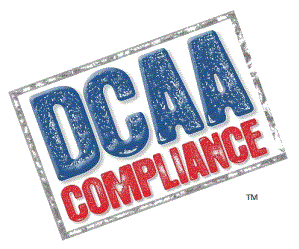Over the years, a couple of reoccurring themes pop up in my work with government contractors, some of them small enough not to know better and others big enough to avoid simple mistakes.
One of the critical reports government contractors should monitor on an ongoing basis are job cost reports. Contractors often refer to these reports as job cost ledgers, project status reports, or job profit and loss.
One of my larger clients utilizes a software package well known in the government contracting world. The software is known for it vast and complicated features and this client took advantage of these features to create multiple overhead pools with layers of allocation and several different bases. They even eventually created an overhead pool that utilized another overhead pool as its base making the former pool superfluous.
One of the tasks I worked with this company on involved finalizing costs on a multi-million dollar contract that involved numerous inter company activities and hundreds of other projects in the base for G&A allocation.
All through this process, the contractor informed me that the cost reports coming out of this software package could not be relied on.
Okay, but I discovered they had no formal replacement. I am sure that various managers created cost reports on their own, but the company as a whole, relied on financial reporting (how the company was doing) and on the invoicing (percentage of sales).
This is a perfect example of where DCAA involvement could actually benefit the contractor, especially when they submitted an incurred cost proposal with a mistake on the Schedule H that multiplied the contractor’s total costs by a factor of five. This mistake was on one of the better submissions, previous to that one they simply buried DCAA in paper submissions totaling hundreds of pages. DCAA response did not surprise me. Unfortunately, DCAA chose not to audit them, placing them in the low risk category and signing off on their rates.
I, on the other hand, built cost reports off their general ledger in order to support their attempt to recover money and discovered an interesting fact: Their costs reports were fine, not only fine but accurate to a greater degree then anything thing they created off of bypassing the accounting system and creating their own reports out of the database.
Lessons?
- Do not create a cost structure that you do not understand.
- Come up with a standardized method of reporting and allocating your costs and do not change it without an excellent reason (a program manager talking you into changing from Total Cost Input to Value Added in order to reduce G&A hitting his job is not a valid reason).
- Once you agree on the cost accounting and reporting methods then by all means, REPORT IT! Monthly finance meetings should include review of all projects to include revenue and costs.
- Document your cost structure (the lack of documentation about how they set up their cost structure contributed to their losing faith in more than adequate reports and creating pools that made no sense).
- On a formal basis each year review your cost structure in light of changes to your business over the year or anticipated future changes (Maybe there is a good reason to move to Value Added).
- Call me if you need help.
